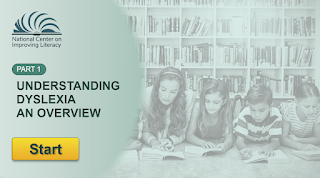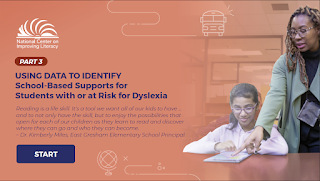Absolutely, but with a caveat.
So, it turns out that it's REALLY hard to find a good Language Arts curriculum. The textbook publishing industry is a juggernaut and is bloated with cash and the want of more. In turn, they bloat their products with gimmicky things: lots of colors, pictures, manipulatives, puppets, and hopefully some decodable books somewhere in the mix.
Also, all programs are not created equal. It's important to check the evidence behind a program - but that is also difficult. There are a couple of websites out there that will give you decent information about curriculum, but many of them are difficult to navigate or the information is given without much context. Personally, I think that
EdReports is the easiest to follow and understand - here is the
Wit & Wisdom Entry - but to be fair, I don't actually know what the EdReports criteria is for reviewing things. Many programs don't even show up on the other websites (
What Works Clearinghouse,
NCII,
Evidence for ESSA) because the criteria for review wasn't met. That means that the research wasn't done in such a way that it qualified for review. Also, I feel like EdReports provides opinions based on the research which is not what you'll find on those other websites. If you want to do your OWN research into curriculum, you can check out
The Reading League's Curriculum Evaluation Tool.
All that, which sort of took me into the weeds a bit, is to say that you can have the BEST curriculum out there. Maybe it follows an amazing scope and sequence and the evidence is that kids learn to read at a greater rate than kids who are not getting what we will call Magical Program.
And here's your caveat...
But if you still have teachers who are telling kids to guess a word by looking at a picture, or to figure out the word from context, or to see if it "sounds right," then all the evidence in the world is not going to make that program work.
Evidence is only as good as the fidelity with which the program is implemented.
I cannot stress enough how important it is for teachers to STOP TELLING KIDS TO GUESS WORDS BASED ON PICTURES! It is harmful to EVERYONE, even the kids who do learn to read without proper instruction! Those kids who learn to read without proper instruction? Many of them will develop problems later - when they no longer have pictures and the words are more complex.
I'm cautiously optimistic about the implementation of Wit & Wisdom in our school district. It's a pretty good program and it does have a scope and sequence. It also builds upon prior knowledge which is very important.
What am I worried about with the implementation of the new Wit & Wisdom?
Off the top of my head:
- Will there be continued coaching for teachers who are using the program?
- Is the professional development deep enough and are teachers engaging in that professional development?
- Will the district actually implement an MTSS-R system so that there is a process for what to do when a student IS NOT making progress?
- Even Magical Program will not work for all students at the same rate. Students with dyslexia and other reading struggles will still require more intensive instruction.
- Will schools continue to implement the program with fidelity through the upper grades? Ideally, putting a good Tier 1 program in place should stem the flow of kids into Tier 2 and Tier 3, but if you stop teaching reading after 2nd or 3rd grade because you've arbitrarily decided that that's when kids switch from learning to read to reading to learn, you're going to be right back where you started.
- What about the kids we've already failed? What about my son who is still struggling with reading in high school and who NEVER learned to write well (dyselxia also impacts writing and organizing thoughts around writing). Are we going to implement anything for them?
I fear the answer to that last question is no. There is no time for my son to get all his credits in high school and take a remedial course in reading or writing. So I will continue to pay a tutor to help him with reading. I may have to find someone to help with his writing - but since I was a creative writing major and it's kind of my jam, I think I can help for the time being. But this assumes that he will actually let me help him.
I hate to end on a low note, but facts are facts. I am going to drop a few resources here to help with some understanding:
Not sure what I'm talking about when I discussed Tiers of Support? Check out this graphic (designed by the lovely people at the Lead for Literacy Center (L4L) and then polished into a graphic by yours truly (I am part of the Lead for Literacy dissemination team). You can read the brief that goes with the graphic too. L4L has a ton of really great resources for school, district, and state level leadership - because everyone from top to bottom should understand what good reading instruction looks like.
Lastly, the new NCIL
Supporting Students with Dyslexia Toolkit. This houses Understanding Dyslexia as well as 4 brand new Toolkits and Tutorials. And here's a tip
Whispering: reading instruction for students with or at risk for dyslexia is good for ALL students. So, even though these things say "Dyslexia" everywhere, this information is really good information for all teachers and parents.






No comments:
Post a Comment